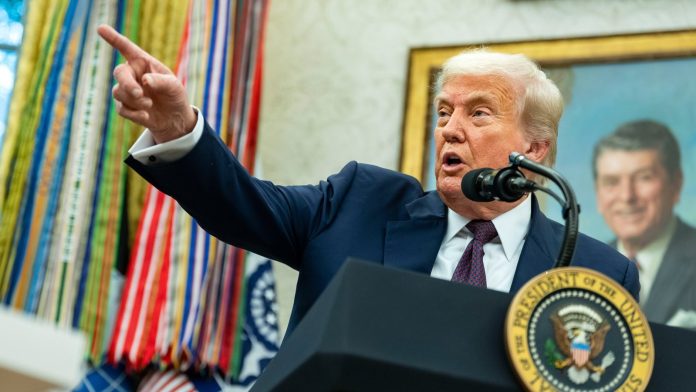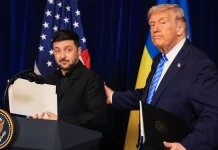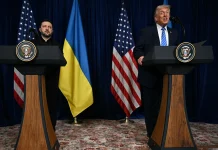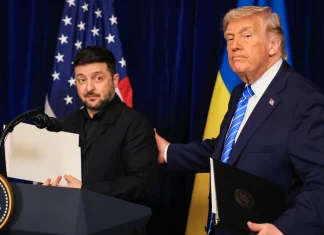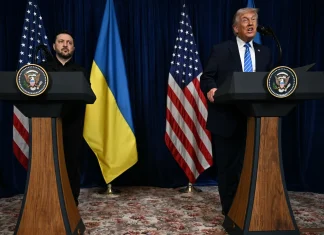The American Trade Gambit: Unpacking the High-Stakes Economic Chess Game
When Donald Trump marched back into the White House in January, his trademark boldness on the international stage flashed prominently through an aggressive trade strategy. A trade war was declared — swift, sweeping tariffs slapped on nearly every corner of global imports to the United States. At first glance, the deal seems like a clear triumph for the U.S. economy. Treasury coffers have been fattened with tens of billions of additional dollars each month, and the long-chronicled trade deficit has narrowed, notably with China, whose gap shrunk to its smallest point in over two decades.
But as with all great dramas, the plot thickens. What does “winning” the trade war truly entail? Is it simply a ledger of tariffs, trade balances, and dollars collected? Or is there a deeper, more nuanced tale playing out — one about the very soul of economic globalization, American households, and the delicate ecosystems of international cooperation?
The Tariff Juggernaut: From 2.5% to Nearly 20%
Imagine a dial — on January 20, 2021, the effective tariff rate for the U.S. sat comfortably near 2.5%. By mid-2024, this dial had surged, bulging toward 20%, the highest tariffs seen in America in a century according to the Atlantic Council. Trucks clog ports from Los Angeles to Long Beach; cargo containers stack sky-high, symbols of a world shifting beneath our feet.
Yet, remarkably, much of the world has refrained from firing back tit-for-tat retaliation. This restraint has spared the global economy from spiraling into a full-blown, economic bloodbath. Instead, some observers, like Josh Lipsky from the Atlantic Council, wonder if this de-escalation may be more about exhaustion than true diplomacy.
“The President is indeed wielding tariffs like a maestro, orchestrating complex economic tremors worldwide,” Lipsky shares. “But at what cost? The U.S. economy itself may be the greatest casualty in this high-stakes symphony.”
Beneath the Numbers: Real Lives, Real Consequences
Let’s leave behind numbers for a moment and peer into the lives in communities battered by these economic decisions.
In a bustling dairy town in France, where François-Xavier Huard heads the FNIL federation, the 15% tariff agreement struck by European Commission President Ursula von der Leyen with the U.S. brought uneasy relief. “Fifteen percent is less brutal than the looming 30% we feared, but still, millions of euros lost is not something our farmers can simply shrug off,” François explains.
Farmers and winemakers alike feel like chess pawns amid titanic moves on the geopolitical board. This tension isn’t confined to Europe. American consumers, too, have displayed surprising resilience, their purchasing power weathering early tariff-related inflation hits, yet signs are appearing of curbed growth and pinch on jobs as costs ripple through supply chains.
A Patchwork of Deals: Allies and Adversaries Alike
Trump’s administration inked framework agreements with eight key partners — the EU, Japan, UK, South Korea, Vietnam, Indonesia, Pakistan, and the Philippines — each bound by tariffs between 10% and 20%. These partnerships cover roughly 40% of U.S. trade. Factoring in China, which currently wrestles with a hefty 30% levy, this figure approaches 54%. Yet, as numbers grow, so too does complexity, with deals often appearing less like solid contracts and more like shifting sands.
For example, just yesterday, tariffs on Indian goods were doubled from 25% to 50%, largely due to India’s controversial purchases of Russian oil. Brazil and Switzerland, two countries once in warmer diplomatic embrace with Washington, now face escalating tariffs—payback for political slights and stalled negotiations.
Ryan Majerus, a trade lawyer with experience in both the Trump and Biden administrations, reflects this precariousness: “We are still grappling with century-old trade issues like intellectual property theft, market access, and regulatory opacity. These new tariffs are band-aids at best,” he notes. “There’s no quick fix — these disputes will flicker and flare for months, possibly years.”
Promises on Paper: The Trust and Enforcement Question
The promises embedded in these deals—over half a trillion dollars pledged for Japanese investments, even more for the EU—sound bold and brash. But lining up pledges with reality is another matter. Much of the action will depend on individual member states and private enterprises, which politicians in Brussels and Washington alike cannot fully control.
“It’s not just about governments signing papers. It’s about catalyzing private companies, investments, loans, and ultimately, market behavior,” shares Kelly Ann Shaw, a former White House trade adviser. “Making trades and tariffs is easy. Getting buy-in and implementation? That’s the true art form.”
What Happens When Deals Fall Short?
History gives pause. The Phase 1 US-China agreement, often touted as a milestone, faltered when China didn’t meet its modest purchase goals. The Biden administration inherited a tangled web of enforcement difficulties, a testament to the challenges ahead.
Will the U.S. be able to monitor and penalize allies effectively? Or is the new tariff regime building a skyscraper of promises on foundations of sand?
Behind the Courtroom Doors: The Legal Battles Ahead
Further complicating matters, the legal grounding for many tariffs rests on shaky precedent. Trump’s team invoked the 1977 International Emergency Economic Powers Act—a tool initially designed to sanction hostile nations—to justify broad tariffs aimed at allies and trade rivals alike.
During recent appellate court hearings, judges drilled down into this novel usage, highlighting uncertainties that have yet to be resolved. Legal experts predict this battle is destined for the highest courts, with a ruling that could reshape trade law for generations.
Reflections: What Does Winning Look Like?
So, dear reader, after wading through tariffs, deals, and legal wranglings, the question beckons: does winning the trade war mean cutting a smaller trade deficit? Hoarding government revenue? Or is it about something more fundamental—structuring a fair global trading system where cooperation trumps coercion?
Michael Strain of the American Enterprise Institute offers a sober assessment: “Geopolitically, Trump might pocket concessions, but economically, the data plainly show America is hurt first. He’s more willing to hurt his own people than others are willing to retaliate. That doesn’t feel like winning.”
In an interconnected world facing rising nationalism and fracturing alliances, America’s bold trade gambit is a mirror reflecting broader global anxieties. It urges us all to reconsider what prosperity means when walls rise and bridges tremble.
How do we balance national interests with global interdependence? And at what cost?
For now, the world watches as the high-stakes chess game unfolds — each move imparting lessons, losses, and unlikely victories.


